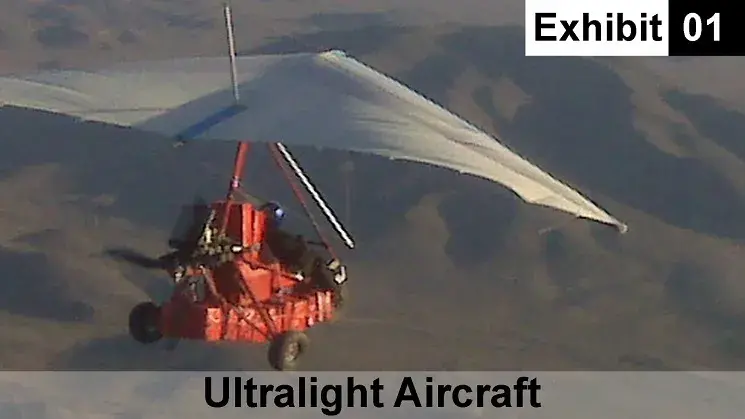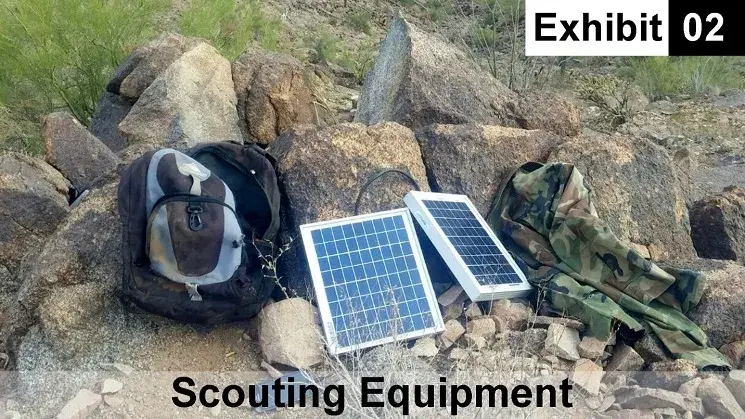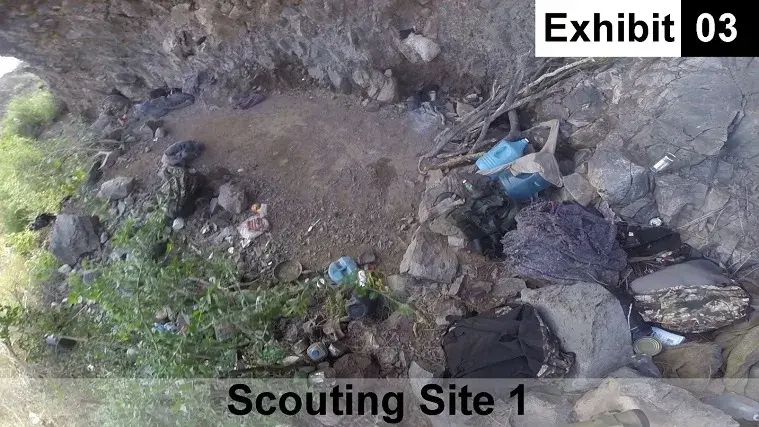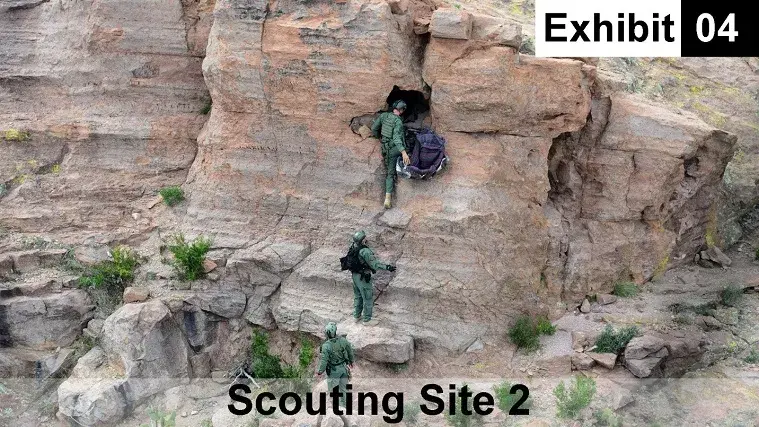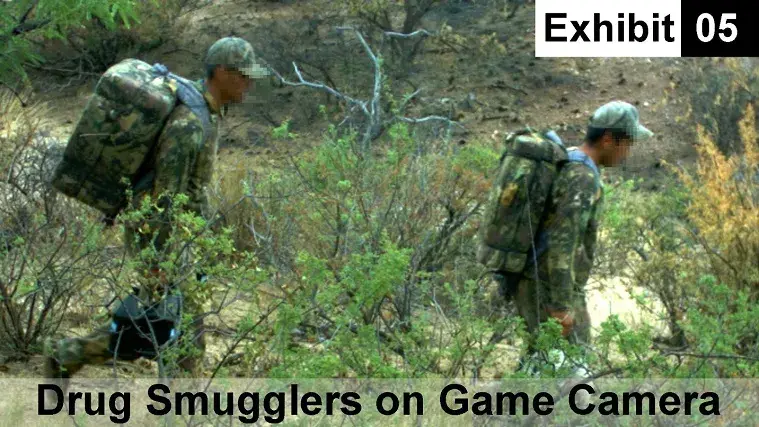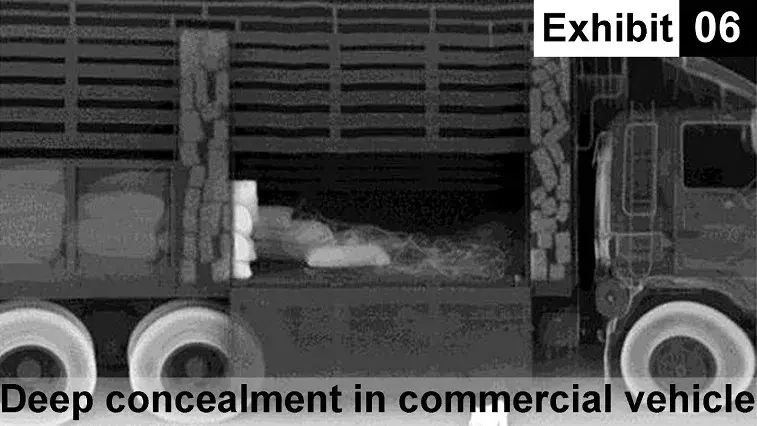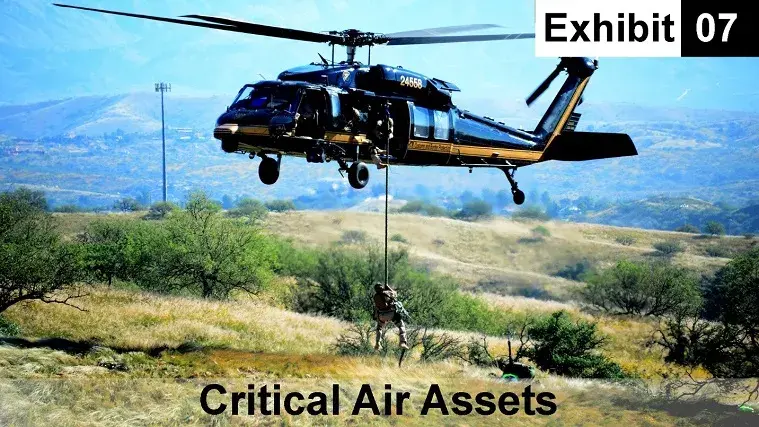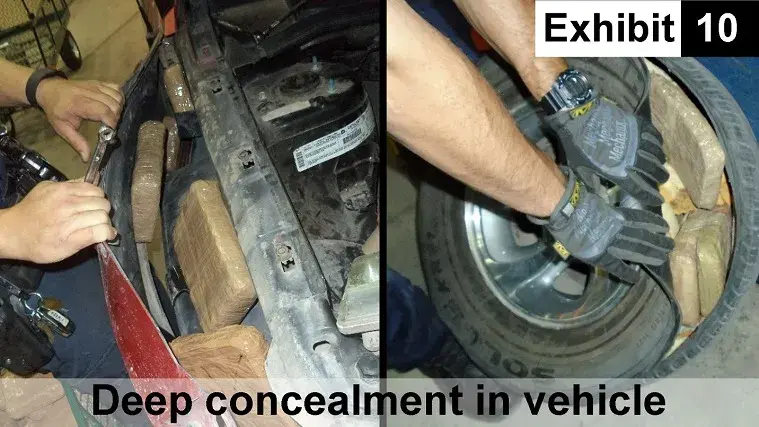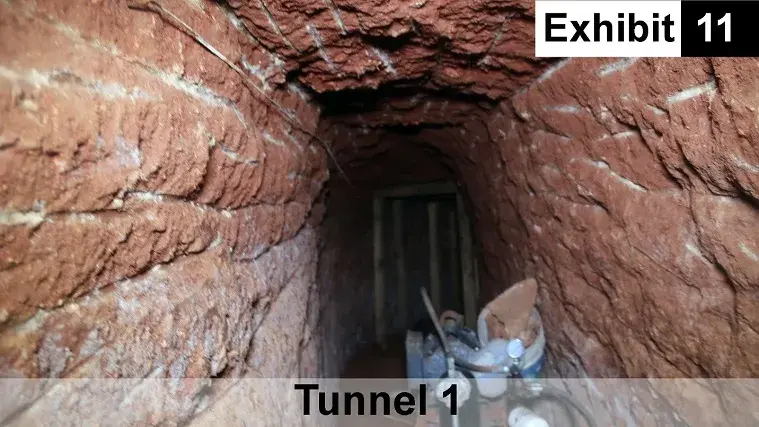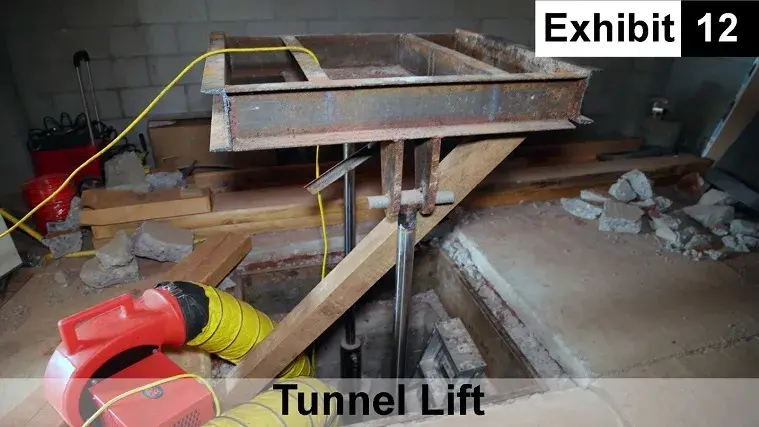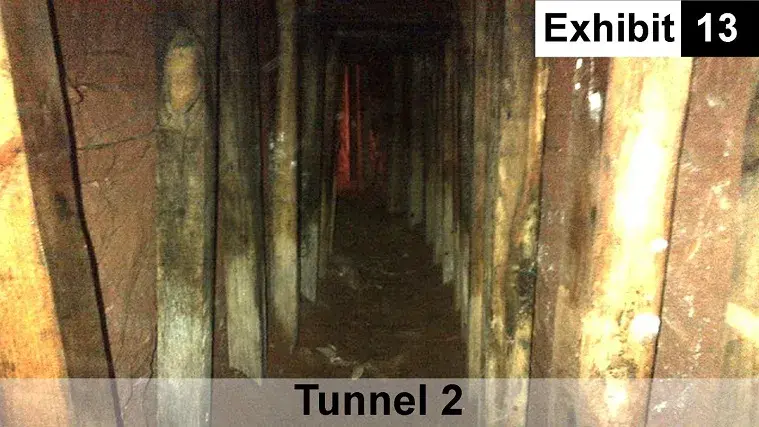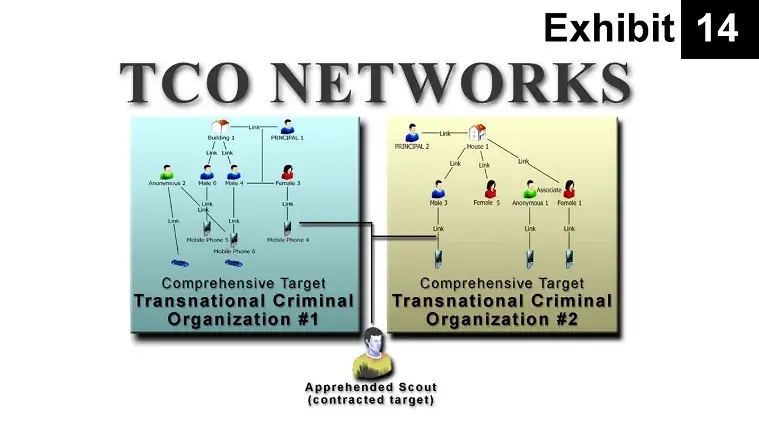210 House Capitol Visitor Center, U.S. Capitol
Chairwoman McSally, Ranking Member Vela, and distinguished Members of the Subcommittee, thank you for the opportunity to appear today on behalf of U.S. Customs and Border Protection (CBP) to discuss the evolving drug smuggling tactics and techniques used by transnational criminal organizations (TCO) and how CBP is working to address this threat and secure our Nation’s borders.
CBP is responsible for America’s frontline border security and has a significant role in the Nation’s efforts to combat the cross-border criminal activity of cartels and other TCOs. Thanks to the support of Congress, in the past decade, the Department of Homeland Security (DHS) has deployed more personnel, resources, technology, and tactical infrastructure for securing our borders than at any other time in history. As America’s frontline border agency, CBP protects the United States against terrorist threats and prevents the illegal entry of inadmissible persons and contraband, while facilitating lawful travel and trade. CBP’s mission demands we examine all border security threats, from human smuggling to drug smuggling. TCOs continue to exploit the border environment for their own gains, employing various capabilities to carry out illegal operations. We continue to meet and combat these capabilities.
CBP plays a critical role in the effort to keep dangerous drugs from illegally entering the country. Specifically, by leveraging a comprehensive, multi-layered, intelligence driven, and threat-based approach to enhance the security of our borders, we can diminish the effectiveness of TCO drug operations, as well as other border security threats. This dynamic approach to security both reduces the vulnerability of any single operational approach and extends our zone of security to include the avenues of approach, allowing threats to be addressed before they reach our borders. By leveraging international partnerships, we can ensure that our physical borders are not the first or last lines of defense.
The Current Border Environment
The border environment today is both challenging and complex. TCOs continually adjust their operations to circumvent detection and interdiction by law enforcement, and are quick to take advantage of technology advances, cheaper transportation and improvements to distribution methods, and improving fabrication and concealment techniques. Also, while the threats of illegal immigration and drug smuggling continue to be the principal criminal concerns in the border environment, TCOs continue to maintain a diverse portfolio of crimes to include fraud, weapons smuggling, kidnapping, and extortion. DHS, with the support of Congress, has made significant improvements to the physical security infrastructure along the Southwestern border and has invested in personnel, training, and information sharing. These investments have been valuable in combating the TCOs and have helped shape the current border environment.
In Fiscal Year (FY) 2016, CBP officers and agents seized and/or disrupted more than 3.3 million pounds of narcotics across the country1 including approximately 46,000 pounds of methamphetamine, 4,800 pounds of heroin, and 440 pounds of fentanyl. The vast majority of CBP drug interdictions occur along the Southwest land border from all environments and transportation modes.
Much of the illegal drug trafficking encountered by CBP officers and agents is facilitated by TCOs operating in Mexico. The reach and influence of Mexican cartels, notably Los Zetas, and the Gulf, Juarez, Jalisco New Generation, and Sinaloa Cartels, stretches across and beyond the Southwest border, operating through networks and loose affiliations with smaller organizations in cities across the United States. According to a 2016 Drug Enforcement Administration report, Mexican TCOs pose the greatest criminal drug threat to the United States. These criminal organizations traffic heroin, methamphetamine, cocaine, and marijuana throughout the United States, using established transportation routes and distribution networks.2 TCOs also maintain influence over U.S.-based gangs as a way to expand their domestic distribution process. Gang members are heavily involved in the domestic distribution of narcotics and, to a lesser extent, the actual movement of contraband across the Southwest border.
1 FY 2016 Border Security Report, U.S. Customs and Border Protection, https://www.cbp.gov/document/report/cbp-border-security-report-fy2016
2 Drug Enforcement Administration, 2016 National Drug Threat Assessment Summary, “Mexican Transnational Criminal Organizations”, page 1, DEA-DCT-DIR-001-17, November 2016. https://www.dea.gov/documents/2016/11/01/2016-national-drug-threat-assessment.
TCO Operations
In examining TCOs, it is apparent that they continue to seek ways to exploit the border environment. These TCOs pose a significant threat to both U.S. and international security. The illegal operations of TCOs affect both public safety and economic stability. Not only are these criminal networks resilient, but they maintain illicit pathways through foreign countries and towards the U.S. border, which could be exploitable by terror organizations to move personnel and assets into the United States. Furthermore, their operations are often diversified with separate operational cells, and with TCO participants often having the capability to participate in multiple roles. These TCOs are highly mobile and maintain sophisticated cross-border networks and are involved in a wide range of organized criminal activities including firearms trafficking, drug smuggling, and alien smuggling (See Exhibit 14). Additionally, TCOs operate throughout the spectrum of the border environment including at and between the ports of entry (POE), and in the various domains such as land, air, and sea.
The vast expanses of remote and rugged terrain between our POEs, and the large volume of trade and traffic at our POEs, continue to be targeted for exploitation by TCOs. These groups use a wide range of ever-evolving methods to move illicit goods into the United States. Some of these techniques include the movement of drugs by foot, conveyance, tunneling, and even through the use of projectile-type systems. These groups also rely on supporting tactics such as counter surveillance, concealment, and logistical support to further their illegal drug smuggling operations.
The Southwest land border POEs are the major points of entry for illegal drugs, where smugglers use a wide variety of tactics and techniques for concealing drugs. CBP officers regularly find drugs ingested, concealed in body cavities, taped to bodies (body carriers), hidden inside vehicle seat cushions, gas tanks, dash boards, tires, packaged food, household and hygiene products, in checked luggage, and concealed in construction materials on commercial trucks. While many smuggling attempts occur at POEs, the mail and express consignment environment, as well as maritime cargo also remain attractive options for smugglers.
TCOs have increased both the number and the sophistication of smuggling tunnels (See Exhibits 11-13). The tunnel threat consists of four categories of tunnels: conduit, rudimentary, interconnecting, and sophisticated. In the Arizona border regions specifically, TCOs also continue to attempt “drive-throughs” – incursions into U.S. territory by driving vehicles on ramps over the fence, or by attempting to cut the fence to drive vehicles containing illegal drugs across the border. Drive-through incursions generally involve large loads of illegal drugs, an expansive network of individuals (to include scouts), strategic logistics, and sophisticated communications equipment. TCOs have also improved their capabilities in passing drugs over existing fencing. Whereas TCOs previously threw, by hand, small loads of drugs over the border fence, they now utilize compressed air cannons to launch bundles of illicit narcotics in excess of 100 pounds over the border fence. These illegal operations are indicative of the ever-evolving and persistent intent of TCOs to exploit the border environment.
As interdiction and enforcement efforts along the U.S.-Mexico border have become more effective, TCOs continue to use maritime and air smuggling routes to transport contraband into the United States. TCOs use a variety of methods to enter the United States via maritime routes, including the use of small open vessels known as “pangas.” These small, wood or fiberglass, homemade fishing vessels cross the border at night, attempting to use their relatively high speed and small radar signature to evade detection by CBP and U.S. Coast Guard (USCG) patrol vessels and aircraft. TCOs also use pleasure boats or small commercial fishing vessels — Sometimes equipped with hidden compartments — and attempt to blend in with legitimate boaters and transport contraband during broad daylight. Smuggling operations using this technique rely on the sheer number of similar boats on U.S. waters on any given day to elude detection. TCOs have also turned to new methods of smuggling by air with the emergence in recent years of the use of ultralight aircraft (See Exhibit 1). Under the cover of darkness, ultralights fly across the Southwest border and airdrop drugs to waiting ground crews.
TCOs regularly use counter surveillance tactics. This type of activity ranges from the use of scouts, individuals performing surveillance activity against law enforcement agencies, to more complicated activity such as interception of law enforcement communication. Scouts embed deep in the remote, rugged, terrain as well as urban communities, watching and reporting on border law enforcement activities. TCOs who deploy these scouts utilize a robust, highly technical, communication method – with the deliberate intent of concealing their communication from law enforcement (See Exhibits 2-5). While some of these operations are illegal in their execution (such as attempts to illegally obtain law enforcement sensitive information) others simply exploit the public venues from which, and within which, law enforcement operates (such as monitoring the coming and going of patrol vehicles from a border patrol station).
As TCOs involved in smuggling continue to explore new tactics and techniques to attempt to evade detection and interdiction, CBP, our Federal partners, and other law enforcement entities continue to adapt and increase our enforcement resources, enhancing our capabilities, and refine our strategies to anticipate and disrupt TCO activity.
CBP Efforts, Resources, and Capabilities to Counter TCOs
Addressing the TCO threat necessitates a united, comprehensive strategy and an aggressive approach by multiple entities across all levels of government. In close coordination with local, state, tribal, international and Federal law enforcement partners – specifically U.S. Immigration and Customs Enforcement (ICE) and the USCG – CBP’s continued efforts to interdict illegal aliens, drugs, cash, and weapons at the border are a key aspect of U.S. border security efforts. We must also concentrate on increasing our understanding and identification of transnational criminal networks in order to identify, interdict, investigate, and prosecute TCOs and their criminal activity.
Along U.S. Borders
Since 2004, the number of Border Patrol agents has nearly doubled, from approximately 10,800 in 2004 to over 19,500 agents today. Along the Southwest border, DHS has increased the number of law enforcement on the ground from approximately 9,100 Border Patrol agents in 2001 to more than 16,000 today. At our Northern Border, the force of 500 agents that we sustained 15 years ago has grown to over 2,000.3
To combat the threat of TCO drug smuggling activities along the Southwest border between the POEs, CBP relies on a network of systems comprising of information, integration, personnel, technology, and infrastructure. CBP has deployed sophisticated detection technology, including fixed towers, mobile surveillance units, ground sensors, and thermal imaging systems to increase the ability to detect illegal cross-border activity and contraband and maintains 654 miles of border fencing and other tactical infrastructure in key trafficking areas. The CBP ReUse effort utilizes Department of Defense (DOD) technologies, including aerostat technology, spectrometers, land, air, and maritime radar, and night-vision equipment that are not needed by DOD but can be used to satisfy critical border security missions with minimal up-front costs for DHS. These resources are matched with personnel of various skill sets who work with other Federal, state, and local law enforcement agencies to interdict TCO drug smuggling operations.
As part of its efforts to prevent the illicit smuggling of drugs and other contraband, CBP maintains a high level of vigilance on avenues of egress from our Nation’s borders. TCOs deploy a sophisticated network of scouts into rough and remote terrain as well as highly populated urban areas along the Southwest border, making the identification and disruption of scout activity highly challenging. CBP utilizes predictive analysis, available technology, targeted enforcement, and the ability to rapidly readjust counter surveillance activities to affect and degrade the ability of scouts to operate in a given environment. When the location of a scout is discovered, we work quickly to counter the scout’s ability to take advantage of major vantage points and force spotter displacement or relocation; thus forcing them into more costly, vulnerable, and continuous reorganization.
When tunnels are detected and investigated, each U.S. Border Patrol (USBP) sector follows established protocols for coordination, confirmation, assessment, investigation, exploitation, and remediation. The USBP is an active participant in ICE Homeland Security Investigations’ (HSI) tunnel task forces. Since 2010, CBP has operated a Tunnel Detection and Technology Program, to integrate the efforts of CBP, ICE, the DHS Science and Technology Directorate (S&T), and the Drug Enforcement Administration (DEA), to address tunnel-related activities and technology.
As an example of further CBP counter tunnel efforts, in March of 2016, collaboration through the cross-border coordination initiative and bi-national tunnel teams led Mexican officials to alert USBP agents in Nogales, Arizona, that a tunnel entrance in Nogales, Sonora had been located. During their investigation, USBP discovered that the incomplete cross-border tunnel extended approximately 30 feet into the United States. Since agents discovered the first illicit tunnel in 1990 in Douglas, Arizona, there have been 195 i1licit cross-border tunnels discovered - 194 along the Southwest border and one discovered along the Northern border near Lynden, Washington. Investigating a cross-border tunnel is a particularly dangerous task that requires an agent to crawl into what is usually a dark and confined space of unknown structural integrity and the potential to encounter a variety of threats. In some of the most narrow, dangerous tunnels, the Nogales tunnel team deploys a wireless, camera-equipped robot to investigate the passages. After a tunnel is investigated, the passage must be thoroughly remediated, or blocked to prevent further use.
At U.S. Ports of Entry
To support CBP’s evolving, more complex mission since September 11, 2001, the number of CBP officers ensuring the secure flow of people and goods into the nation through POEs has increased from 17,279 customs and immigration inspectors in 2003, to over 21,000 CBP officers and 2,400 agriculture specialists today. At POEs, the Office of Field Operations (OFO) utilizes CBP officer expertise and experience, technology, such as non-intrusive inspection (NII) x-ray and gamma ray imaging systems, and canine teams to detect the illegal transit of drugs hidden on people, in cargo containers, and concealed in conveyances (See Exhibit 6 and 8-10).
As of February 1, 2017, 313 Large-Scale (LS) NII systems are deployed to, and in between, our POEs. In FY 2016, LS-NII systems were used to conduct more than 6.5 million examinations resulting in more than 2,600 seizures and over 359,636 pounds of seized narcotics. NII systems are particularly valuable in detecting concealed contraband in vehicles. Two months ago, CBP officers working at the World Trade Bridge in Laredo, Texas, referred a driver and vehicle for secondary inspection. Using both non-intrusive inspection equipment and a narcotics-detection canine, CBP officers discovered and seized 201 pounds of alleged crystal methamphetamine concealed in fiberglass pottery, with a street value of more than $4 million.4
Personal vehicles are not the only means by which TCOs attempt to smuggle illegal drugs. In April 2016, CBP officers used non-intrusive inspection equipment to discover approximately 121 pounds of heroin and eight pounds of cocaine in a shipping container of vegetables transiting from Ecuador to Miami, Florida, through the Red Hook Container Terminal in Brooklyn, New York.5 TCOs also move drugs – especially hard drugs such as heroin and methamphetamine – in smaller quantities to try to evade detection. This past December, CBP officers working express consignment operations in Cincinnati intercepted a shipment containing 53.46 pounds of methamphetamines concealed in decorative concrete sculptures shipped from Mexico.6
The OFO National Canine Program (NCP) deploys specialized detection canine teams throughout the nation. OFO’s 489 canine teams are trained to detect narcotics, currency, firearms, and concealed humans. The majority of the canine teams are concentrated in four field offices along the Southwest border. Of those 489 canine teams, 49 of these teams also trained to detect firearms and currency. During FY 2016, OFO canine teams were responsible for the seizure of 533,783 pounds of narcotics, $38,629,557 in seized property, and $21,530,795 in currency seized. The currency/firearms detection canine program was also responsible for 154 firearms and 14,000 rounds of ammunitions seized.
Because TCOs are also known to use legitimate commercial modes of travel and transport to smuggle drugs and other illicit goods, CBP partners with the private sector to provide anti-drug smuggling training to air, sea, and land commercial transport companies (carriers). The overall goals of these programs and their training component are to encourage commercial carriers to share the burden of stopping the flow of illicit drugs; to deter smugglers from using commercial carriers to smuggle drugs; and to provide carriers with the incentive to improve their security and their drug smuggling awareness. The Carrier Initiative Program is a voluntary training program directed at employees of carriers with route systems that are high risk for drug smuggling. The Super Carrier Initiative Program is for those carriers that face an extraordinarily high risk from drug traffickers. Participating carriers sign agreements stating that the carrier will exercise the highest degree of care and diligence in securing their facilities and conveyances, while CBP agrees to conduct site surveys, make recommendations, and provide training. CBP and various carriers have signed over 3,800 Carrier Initiative Agreements and 27 Super Carrier Agreements.
In the Air and the Sea
To advance counternarcotic efforts in the air and at sea, CBP deploys capable and effective aerial and marine assets, including manned aircraft, unmanned aircraft systems and strategic and tactical aerostats, providing critical surveillance coverage and domain awareness (See Exhibit 7). CBP’s Air and Marine Operations (AMO) employs high speed Coastal Interceptor Vessels specifically designed and engineered with the speed, maneuverability, integrity and endurance to intercept and engage a variety of suspect non-compliant vessels in offshore waters, including the Great Lakes on the northern border.
CBP AMO P-3 Orion Aircraft (P-3s) have also been an integral part of the successful counternarcotic missions operating in coordination with Joint Interagency Task Force-South (JIATF-S). The P-3s patrol in a 42 million-square mile area known as the Source and Transit Zone, which includes more than 41 nations, the Pacific Ocean, Gulf of Mexico, Caribbean Sea, and seaboard approaches to the United States. In Fiscal Year 2016, CBP's P-3s operating out of Corpus Christi, Texas, and Jacksonville, Florida, flew more than 6,100 hours in support of counternarcotic missions resulting in 129 interdiction events of suspected smuggling vessels and aircraft. These events led to the total seizure of 87,657 kg of cocaine with an estimated wholesale value of $2.5 billion.7
In the air domain, AMO detects, identifies, investigates, and interdicts potential air threats to the United States including general aviation (GA) aircraft involved in the transit of contraband. The Air and Marine Operations Center (AMOC), a state-of-the-art law enforcement surveillance center, monitors complex airway traffic to identify illicit use of aircraft and those attempting to blend in with legitimate traffic. CBP’s eight Tethered Aerostat Radar Systems (TARS) form a network of long-range radars deployed along the border, which can identify and monitor low-altitude aircraft and vessels. TARS and hundreds of other domestic and international radar data are integrated through AMOC, located in Riverside, California, to identify and track suspect aircraft incursions. Also, AMO actively participates in Operation Martillo, an international counter illicit trafficking initiative whereby U.S. and regional partner nations’ military and law enforcement agencies patrol the air and sea environments in the Caribbean Sea, Gulf of Mexico, and the Eastern Pacific on a year-round basis.
3 As of January 7, 2017.
4 https://www.cbp.gov/newsroom/local-media-release/cbp-officers-seize-more-4-million-crystal-meth-world-trade-bridge
5 https://www.cbp.gov/newsroom/local-media-release/cbp-officers-seize-approximately-121-pounds-heroin-and-8-pounds-cocaine
6 https://www.cbp.gov/newsroom/local-media-release/cincinnati-cbp-seizes-stone-statue-filled-meth
7 Drug Enforcement Administration, 2013 United States Illicit Drug Prices, page 7, DEA-DCW-DIR-012-15, January 2015. 2013 National Price Range, Cocaine, Approximately $28,700 per kilogram.
Intelligence and Information Sharing
Substantive and timely information sharing is critical in targeting and interdicting TCOs involved with drug-trafficking along the Southwest and Northern borders. CBP contributes to several initiatives to improve and integrate the combined intelligence capabilities of multiple Federal entities – including DHS, the Intelligence Community, and DOD – as well as our state, local, tribal, and international partners. For example, CBP participates in the Office of National Drug Control Policy-led Southwest Border Counternarcotics Strategy implementation effort, which includes a focus on the improvement of intelligence and information sharing among law enforcement agencies on the Federal, state, local and tribal levels From the use of labs to improved relationships with partners, we are committed to the creation of an intelligence and information enterprise for the benefit of all those combating drug smuggling. Improved technology and enhanced capabilities have expanded the collection, analysis, and dissemination of information among law enforcement partners working to dismantle TCO networks.
For example, the CBP Laboratories and Scientific Services Directorate uses advanced techniques to provide qualitative identification and quantitative determination as well as analysis of heroin, cocaine, marijuana, and methamphetamine to assist with identifying potential drug smuggling routes. In addition, S&T is working to develop, test, and pilot new technology for securing and scanning cargo, improving surveillance of the Southern border, and enhancing detection capabilities for radar-evading aircraft. S&T is also pursuing and fielding new technology to monitor storm drains, detect tunnels, track low-flying aircraft, monitor ports, and enhance current mobile/fixed radar and camera surveillance systems to increase border security. S&T-developed technology recently put into operational use at the U.S.-Mexico border includes a new general aviation aircraft scanner in Laredo, Texas, and a new Brownsville-Matamoros Rail Non-Intrusive Inspection Microwave Data Transmission System.
CBP also hosts monthly briefing/teleconferences with Federal, state and local partners regarding the current state of the border – the Northern border and Southwest border – in order to monitor emerging trends and threats and provide a cross-Component, multi-agency venue for discussing trends and threats. The monthly briefings focus on narcotics, weapons, and currency interdictions and alien apprehensions both at and between the POEs. These briefings/teleconferences currently include participants from the Government of Canada, the Government of Mexico; ICE; USCG; DEA; FBI; U.S. Northern Command; Joint Interagency Task Force-South; Bureau of Alcohol, Tobacco, Firearms, and Explosives; U.S. Attorneys’ Offices; Naval Investigative Command; State and Major Urban Area Fusion Centers; and other international, Federal, state, and local law enforcement as appropriate.
CBP also contributes to the whole-of-government effort to combat narcotics-related threats by sharing critical information on travelers and cargo with investigative and intelligence partner agencies to identify and disrupt sophisticated routes and networks. Recognizing the need for open and sustainable channels to share information with our law enforcement and intelligence partners, personnel are co-located at the National Targeting Center to support efforts to combat narcotics and contraband smuggling by integrating real-time intelligence and all-source information into CBP targeting efforts and enforcement actions.
Information exchange with our partners within the Government of Mexico, facilitated by the CBP Attaché office in Mexico, has allowed for an unprecedented exchange of real time information through deployments of personnel between our countries. Representatives from Mexican Customs (Servicio de Administración Tributaria) are deployed at the CBP National Targeting Center in Sterling, Virginia, to share information and assist in targeting narcotics and other contraband. Likewise, CBP personnel are assigned to Mexico City and Panama under the Joint Security Program where we exchange alerts on suspicious TCO movements through the monitoring of our Advance Passenger Information System.
Enhancing counternarcotic information sharing in the air and maritime environments, the AMOC integrates data from multiple sensor sources to provide real-time information on suspect targets to responders at the Federal, state, and local levels. AMOC’s capabilities are enhanced by the continued integration of DHS and other Federal and Mexican personnel to increase efforts to identify, interdict, and investigate suspected drug trafficking in the air and maritime domains.
Operational Coordination
A whole-of-government approach that leverages interagency and international partnerships as a force multiplier has been and will continue to be the most effective way to keep our border secure. Providing critical capabilities toward the whole-of-government approach, CBP works extensively with our Federal, state, local, tribal, and international partners to address drug trafficking and other transnational threats along the Southwest border, Northern border, and coastal approaches. Our security efforts are enhanced through special joint operations and task forces conducted under the auspices of multi-agency enforcement teams, composed of representatives from international and U.S. Federal law enforcement agencies who work together with state, local, and tribal agencies to target drug and transnational criminal activity, including investigations involving national security and organized crime.
Under the Department’s Unity of Effort initiative, and with the establishment of three new DHS Joint Task Forces (JTFs), CBP is enhancing our collaboration with other DHS components – specifically ICE and USCG – to leverage the unique resources, authorities, and capabilities of each agency to more effectively and efficiently execute our border security missions against transnational criminal organizations, drug-trafficking, and other threats and challenges. The operation of the JTFs increases information sharing with Federal, state and local law enforcement agencies and improves border-wide criminal intelligence-led interdiction operations to disrupt and dismantle TCO operations. CBP, together with our international, Federal, state, local, and tribal partners, is committed to reducing the risk associated with TCOs by addressing threats within the Southern Border and Approaches Joint Operating Area.
Joint Task Force-West (JTF-W), with CBP as executive agent, developed specific security objectives to frame and focus operations against prioritized TCOs, including integrating and aligning our intelligence capabilities; institutionalizing integrated counter-network operations to identify and target TCOs and illicit networks; prioritizing investigative efforts to disrupt, degrade, and dismantle TCOs and illicit networks; and strengthening international, prosecutorial, and deterrent efforts against TCO enterprises and significant activity impacting the JTF-W Joint Operating Area. Additionally, JTF-W continues to plant the seed for the next evolution of border security by targeting priority TCOs and their supporting illicit networks in ways never done before. As a result of the joint infrastructure that has been established during this past year, JTF-W is now able to plan, coordinate and execute integrated counter network operations beyond traditional DHS component operational capabilities and the immediate border. The ability to leverage the full spectrum of DHS intelligence, interdiction and investigative efforts has maximized consequence application to illicit network members exploiting our operational seams, prosecutorial thresholds and those abusing current immigration benefits.
TCO activity is a global problem and CBP continues to work with our international partners, especially the Government of Mexico to share information and leverage resources to combat this threat. Through the 21st Century Border Management Initiative, the U.S. Government, and the Government of Mexico are working to strengthen our collaborative relationship and efforts to secure and facilitate the cross-border flows of people and cargo. International Liaison Units (ILU) facilitate cooperation between U.S. and Mexican law enforcement authorities as part of a multi-layered effort to target, disrupt, and dismantle criminal organizations.
The Cross Border Coordination Initiative (CBCI) provides an operational framework to enhance public safety and degrade and disrupt the ability of TCOs to engage in the smuggling of illegal drugs, currency, weapons, ammunition, and people. CBP works with the Government of Mexico to deliver targeted consequence strategy through patrols, interdictions, prosecution, investigations and intelligence. In FY 2016, USBP and the Mexican Federal Police conducted 1,584 coordinated patrols. Additionally, bi-national operations, such as Operation Double Threat/Blue Thunder, are innovative and mutually beneficial mirrored patrols that are key to border security and safety for both countries. Operation Double Threat/Blue Thunder took place between USBP and Mexican Federal Police on April 17-30, 2016, in Sonora and Nogales, Arizona. During the time of the operation, entries and arrests dropped by almost 50 percent in the targeted zone, and 3,504 kg of marijuana, 727g of cocaine and 55g of methamphetamine were seized.
On Eastern Pacific and Western Caribbean waters, CBP partners with the USCG and the Mexican Navy (SEMAR) to conduct maritime operations on both sides of the border and maintain a dynamic presence. For example, AMO along with DOD’s Air Forces North (AFNORTH) have partnered to deploy International Air and Marine Operations Surveillance Systems (I-AMOSS) to SEMAR locations. This system has proven to be an invaluable part of their anti-cartel mission and contributes to CBP/USCG/SEMAR joint planning. As such, efforts to expand this capability to other SEMAR locations are underway. Moreover, AMO supports SEMAR with Operation Albatros, providing maritime patrol aircraft over the Eastern Pacific with a SEMAR host-nation-rider onboard acting as a mission commander. Albatros patrols target cocaine-laden vessels transiting from the source and transit zone to the shores of Mexico.
CBP is committed to working with the Government of Mexico to identify and prosecute TCOs, and is working with Mexico Attorney General (PGR) to explore additional areas where CBP and the Government of Mexico can target and degrade TCOs. For example, the Operation Against Smugglers Initiative on Safety and Security (OASISS) is a bi-national prosecutorial program with the PGR that is focused on combating human smuggling across the Southwest border, by identifying and prosecuting Mexican nationals arrested for alien smuggling in the United States. Since the implementation of OASISS in August 2005 to October 2016, a total of 2,556 cases have been generated in the United States. From these cases, a total of 3,009 principals have been presented to the Government of Mexico for prosecution, and 2,196 of those principals were accepted for prosecution. In FY 2016 alone, 99 criminal cases were generated in the United States with a total of 111 principals and 70 of those principals were accepted by the Government of Mexico for prosecution.
AMOC’s coordinating efforts with the Government of Mexico and the deployment of shared surveillance technology continue to enable the Government of Mexico to focus aviation and maritime enforcement efforts to better combat TCO operations in Northern Mexico and the contiguous U.S.-Mexico border. AMOC’s joint collaboration with the Government of Mexico leverages intelligence and operational capabilities to further both air and maritime domain awareness. During FY16, this improved collaboration resulted in 15 Mexico-based seizures, six of which were mixed loads of narcotics. Smuggling events involved aircraft, semi-submersibles, pleasure craft, and panga type conveyances. The most recent example of these efforts was in October 2016, when AMOC detected and tracked an aircraft to a landing in Baja California, Mexico and alerted Mexican authorities. Mexican air and ground forces responded and reported the seizure of a Cessna 206, one vehicle, and 504 lbs. of methamphetamine.
In January 2016, AMO’s Tucson Air Branch participated in Operation “El Diablo Express,” a HSI-led investigation, resulting in a multi-agency operation that utilized HSI, DEA, FBI, Arizona DPS, Scottsdale PD, other CBP components, and Mexican Government agents. The operation was designed to combat Mexican drug cartels operating in Sonora, Mexico, south of Arizona. AMO air crews were instrumental in escorting Mexican Government aircraft and personnel through Arizona airspace on the day of mission, and provided real time information to them as they covertly crossed the border back into Mexico to conduct an early morning raid on a suspected drug cartel location, leading to multiple arrests and seizures.
It is important to acknowledge the significant strides that Mexico has taken in recent years to address transnational organized crime generally and narcotics smuggling specifically. Our relationship with Mexican counterparts is stronger today than it has ever been and their officers face the same challenges and threats that CBP experiences. We receive information from Mexican authorities on a daily basis that helps us better target narcotics smugglers at the border. In 2016, CBP’s Commissioner participated in a high level bilateral and interagency security cooperation meeting in Mexico City, where senior Mexican officials committed to working with the U.S. Government even more closely—including expanding efforts to combat heroin cultivation, production, and trafficking, and sharing more information on smuggling routes and networks. CBP will continue to work in close cooperation with our counterparts in Mexico as we seek to identify, interdict, investigate, and prosecute TCOs.
Conclusion
CBP, through collaboration and coordination with our many Federal, state, local, tribal, international government, and other partners, has made great strides in protecting the integrity and security of our borders. The investments over the years in our border security have been valuable and have helped shape the current border environment. Vulnerabilities have been addressed and this has led to the reduction of illicit activity in many areas along the border. CBP continues to maintain a vigilant watch on the changing dynamics of border security threats.
With continued support from Congress, CBP, in coordination with our partners, will continue to refine and further enhance the effectiveness of our detection and interdiction capabilities to combat transnational threats and the entry of illegal drugs into the United States. Furthermore, through the JTFs, we will continue to work with the intelligence community and our law enforcement partners to improve the efficiency of information sharing with relevant partners, to guide strategies, identify trafficking patterns and trends, develop tactics, and execute operations to address the challenges and threats posed by TCOs to the safety and security of the American public. The establishment of JTFs marks a renewed commitment to seek out and coordinate optimal, multi-component authorities, capabilities, competencies, and partnership expertise to combat all threats to the homeland.
Chairwoman McSally, Ranking Member Vela, and distinguished Members of Subcommittee, thank you for the opportunity to testify today. I look forward to your questions.
Exhibits
